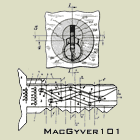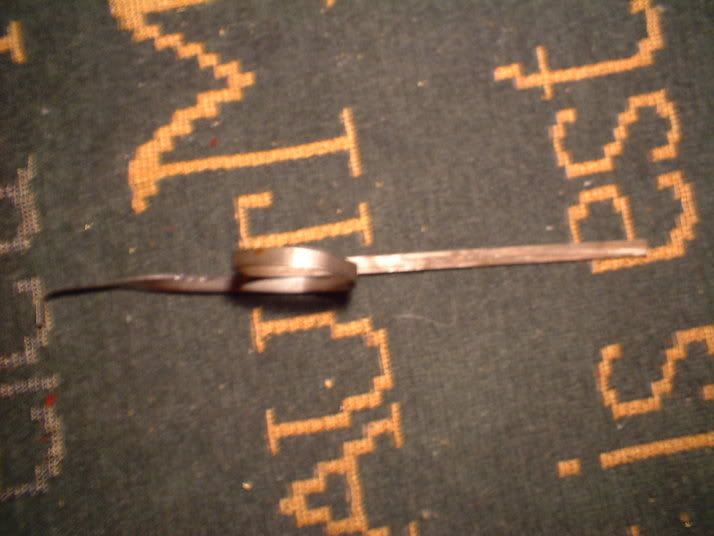|
When it comes down to it there is nothing better than manual tools for your Lock pick Set, whether they be retail, homebrew, macgyver style. DIY'ers look here.
 by unbreakable » 24 Jul 2006 17:42 by unbreakable » 24 Jul 2006 17:42
Hey All,
Anyone know how to make a feather touch tension wrench? I'm kinda confused on what material to use. I used a wiper blade, but it doesn't have that much flex, it might as well be a normal wrench.
Any ideas? I also wonder if anyone knows anything else on the one pictured in Steven Hampton's Secrets of lock picking book? It looks kind of like a wave, only not rounded(Does this make any sense? I swear I'm sober).
Kinda like this |----|\|\|\|\|\|\|\ (I'm so 1337!!)
|
Thanks everyone.
Unbreakable
-
unbreakable
-
- Posts: 1682
- Joined: 28 Oct 2005 18:55
- Location: Nova Scotia, Canada
 by unbreakable » 24 Jul 2006 17:44 by unbreakable » 24 Jul 2006 17:44
The wrench was suppossed to look like this
|----|\|\|\|\|\|\|\
|
-
unbreakable
-
- Posts: 1682
- Joined: 28 Oct 2005 18:55
- Location: Nova Scotia, Canada
 by Raccoon » 24 Jul 2006 17:54 by Raccoon » 24 Jul 2006 17:54
Try making a regular twist flex wrench, then put a bunch of bends into the handle like you described. The idea is simple, the longer the wrench, the less torque is transfered into the rotation of the plug as the metal itself bends. Rather than having an 18" tension wrench held at arm's length, you bend it like a spring so it's the length of a regular wrench.
-
Raccoon
- Supporter

-
- Posts: 3137
- Joined: 27 Dec 2004 4:23
-
 by illusion » 24 Jul 2006 17:58 by illusion » 24 Jul 2006 17:58
the longer the wrench, the less torque is transfered into the rotation of the plug
Wrong, the mere fact it's longer means it will apply more turning force to the plug, hence contradicting the prupose of a feather wrench, don't you think? 
There is a reason the loop is close to the end of the wrench. 
-
illusion
-
- Posts: 4567
- Joined: 2 Sep 2005 13:47
 by Raccoon » 24 Jul 2006 17:59 by Raccoon » 24 Jul 2006 17:59
Actually, a better way to think of it is, the distance the end of an 18" wrench has to travel compared to a 5" wrench, in order to rotate the plug N degrees. Like gears in clockwork, the larger gears have a greater circumference over degrees of movement. The process of crinkling or springing the length of the metal so it's closer to the center point of rotation does not diminish the distance outer distance the handle most travel to achieve similar rotation. Hence, why it feels springy.
-
Raccoon
- Supporter

-
- Posts: 3137
- Joined: 27 Dec 2004 4:23
-
 by Raccoon » 24 Jul 2006 18:04 by Raccoon » 24 Jul 2006 18:04
crap. i'm tired, it's hot.
"The process of crinkling or springing the length of the metal so it's closer to the center point of rotation does not decrease the outer distance the handle must travel to achieve similar inner rotation."
Essentially, you gain more control the further you have to move the wrench in order to rotate the plug 1°. The longer the wrench, the greater the hand movement required, the more delicate the touch.
It's all calculus. something about sin() pi radians or... I'm not looking it up. 
-
Raccoon
- Supporter

-
- Posts: 3137
- Joined: 27 Dec 2004 4:23
-
 by MacGyver101 » 24 Jul 2006 19:08 by MacGyver101 » 24 Jul 2006 19:08
Raccoon wrote:. . . you gain more control the further you have to move the wrench in order to rotate the plug 1°. The longer the wrench, the greater the hand movement required, the more delicate the touch.
That is quite true... if the cylinder is rotating. (At that point, however, you have already picked the lock.  ) While picking, however, the cylinder is in a (relatively) fixed state. The advantage that the "feather touch" wrenchs offers is that the spring moderates the force your finger is applying: the more you deform the spring, the greater the force that is applied to the plug. This feedback of "movement versus force" is quite helpful when trying to apply small amounts of pressure.
-

MacGyver101
- Moderator Emeritus
-
- Posts: 1560
- Joined: 21 Jun 2006 14:40
- Location: Toronto, Canada
 by Shrub » 24 Jul 2006 19:16 by Shrub » 24 Jul 2006 19:16
Yes the further away the turning force is excerted to the plug the more movement would be required to move the plug the same distance if the turning force was close to the plug,
However,
The further away the turning force from the plug the more torque is excerted on the plug,
The more torque used on somthing the less feel there is,
A twist wrench or feather wrench is usually longer because to counter act the springyness it needs to be longer to excert the same pressure if so needed but the twist, spring or in illusions example the loop needs to be as near to the foot of the wrench as possable,
-
Shrub
- Moderator Emeritus
-
- Posts: 11576
- Joined: 23 May 2005 4:03
- Location: uk
 by Shrub » 24 Jul 2006 19:17 by Shrub » 24 Jul 2006 19:17
Incidentally no they are not worth useing if you can pick locks, they are surely quite good for the noob who hasnt learnt how to feather tension properly yet,
-
Shrub
- Moderator Emeritus
-
- Posts: 11576
- Joined: 23 May 2005 4:03
- Location: uk
 by pinsetter » 25 Jul 2006 11:31 by pinsetter » 25 Jul 2006 11:31
I'm voting yes in this poll for the following reasons:
A feather touch wrench does help people who are newer to picking and tend to be heavy handed. These wrenches can actually teach a newbie the proper way to apply tension and make them realize that they are using too much torque with a regular tensioner. What is learned from a feather touch wrench can then be applied when using a regular tensioner.
Also, the feather touch wrench can be good when dealing with security pins. The feather touch wrench will allow the plug to rotate negatively much easier than a normal tensioner. This is helpful for correctly setting spool pins if the picker has a tendency to have heavy hands. Once again, what is learned with the feather touch wrench can then be applied to your normal wrenches.
For those reasons I voted yes, feather touch wrenches are worth using. I do believe that they are at least good to teach proper tensioning techniques. I also believe that they do become less useful as you do learn proper technique. Once proper technique is achieved, a plain tensioner with a flex twist is sufficient for delicate situations.
-
pinsetter
-
- Posts: 404
- Joined: 3 Apr 2006 21:40
- Location: Bedford, Indiana USA
 by unbreakable » 25 Jul 2006 11:48 by unbreakable » 25 Jul 2006 11:48
Thanks to everyone for their replies. I only want one to try to use, when picking locks with security pins.
Unbreakable
-
unbreakable
-
- Posts: 1682
- Joined: 28 Oct 2005 18:55
- Location: Nova Scotia, Canada
 by Buzzzy » 27 Jul 2006 2:02 by Buzzzy » 27 Jul 2006 2:02
I tend to use feather wrenches for raking more than anything, below is a rake, and feather wrench set I designed a while back from wiper inserts.
viewtopic.php?t=12446&postdays=0&postorder=asc&start=0
I have a new favorite feather wrench design, it is nothing more than a standard double end wrench with the shaft thinned down to almost a wire, this allows you to control the flex that best suits you by adjusting the width. It is double ended so a set of three gives you six tip sizes, and being flat takes up very little room in the case. This is also from wiper inserts.
http://putfile.com/pic.php?pic=main/7/2 ... .jpg&s=f10
Thickness of stock .032
Width of shaft approx .055
Regards
Buddy Yes I should use my spellchek
-
Buzzzy
-
- Posts: 127
- Joined: 28 Feb 2006 21:05
- Location: Florida
 by unbreakable » 27 Jul 2006 20:31 by unbreakable » 27 Jul 2006 20:31
Thanks Buzzy, I like your new wrench design. How did you thin them?
I think I should make a pair.
-
unbreakable
-
- Posts: 1682
- Joined: 28 Oct 2005 18:55
- Location: Nova Scotia, Canada
 by Buzzzy » 27 Jul 2006 22:03 by Buzzzy » 27 Jul 2006 22:03
I roughed them with in with a Dremel stoned the shaft straight, and square, then smoothed it out with wet and dry.
The pic I posted was roughed in at that point.
Thanks
Buddy
Yes I should use my spellchek
-
Buzzzy
-
- Posts: 127
- Joined: 28 Feb 2006 21:05
- Location: Florida
Return to Lock Picks
Who is online
Users browsing this forum: No registered users and 2 guests
|








